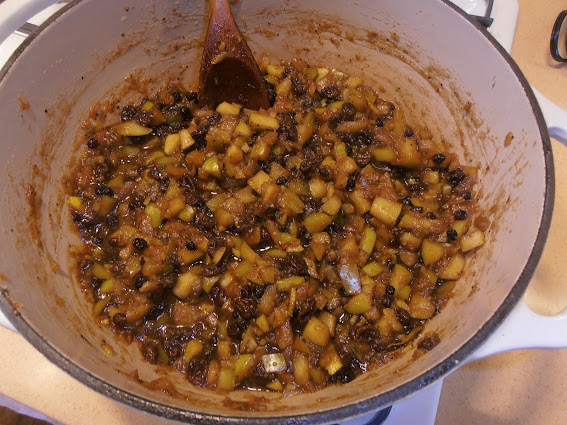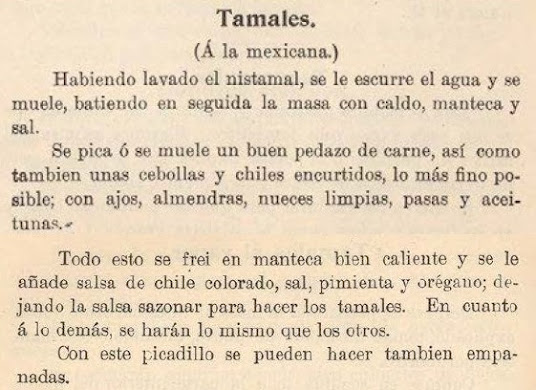It is spring time and my orange tree is full of fruit. My Pakistani mulberry is producing well this year. Other plants in my yard are leafing out and I know they will have fruit on them in a few months. Fruit! I'm so excited about it!
So that is what I was looking for when I skimmed over the Pinedo recipes. I wanted to make something with fruit in it. (In case you don't know what I mean by the Pinedo recipes, do a search on this blog for the keyword "Pinedo.")
Many of her fruit recipes involved sugar, and lots of it. Of course -- she was putting up jellies, jams, and other preserves to last the year, and she did not have refrigeration. But as much as I love sweet food, I really like to let the flavor of the fruit come through. This is why I don't can my fruit preserves, but I do like to freeze them. Last week I made a mulberry and apple spread that had just a little sugar, a splash of lime juice, and a bit of cardamom to deepen the flavor. It was lovely, especially as a side condiment to some grilled pork chops.
What I chose to make was her apple jam because it looked more like a chutney or compote than just jam, and it didn't have as much sugar as many of her other recipes. There are a few recipes with the same title, and this one is on pages 162 - 163.
Apple jam.
Six large, sour apples, chopped; two tablespoons of very fresh butter. If the apple is too dry, add four tablespoons of fresh water.
When the apple is soft, add two cups of sugar, half a cup of honey, a cup of citron, two teaspoons of vinegar, the juice of two oranges and part of the yellow rind, a cup of raisins and another of currant, two teaspoons of cinnamon, a teaspoon of cloves, two teaspoons of pepper and a teaspoon of nutmeg.
 |
| Use one lemon |
6 large green apples
2 tablespoons butter
2 cups sugar
1/2 cup honey
1 cup citron (I used the zest of 2 lemons instead. You might want to use less.)
2 teaspoons vinegar (I used apple cider vinegar)
juice from 2 medium oranges, and the zest from one
1 cup raisins
1 cup currants
2 teaspoons cinnamon
1 teaspoon cloves (I suggest less)
2 teaspoons pepper
1 teaspoon nutmeg
My Notes
My apples were not dry, so I did not add any water. I started the butter melting in a big Dutch oven, then started coring and chopping the apples. They were not peeled. As soon as I chopped 1/4 of an apple, the pieces went into the butter to start sautéing. Every time I added more, I stirred what was in the pot.
Once all the apples were tender, I added the other ingredients.
It is the wrong time of year to get citron, so I chose to use fresh lemon zest that was finely chopped. I also shredded and chopped the orange zest.
Once the other ingredients were mixed well, I brought them just to a boil, then lowered the heat so they simmered.
I let uncovered pot simmer with an occasional stirring until the mixture was thick and starting to look a little dry.



















































